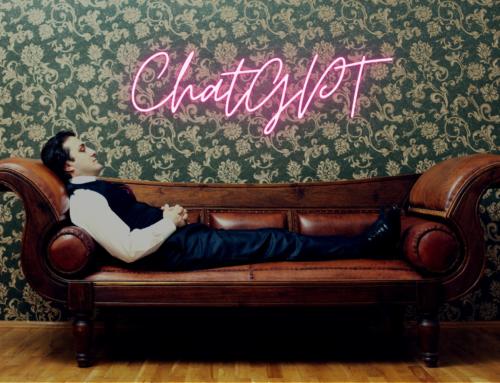When I was in high school, I was a human-computer.
I could literally do quadratic equations in my head.
One of my mentors in high school was Mr. Hickson. He was my math teacher in 11th grade. He would send me home with a little black book full of mathematical thought exercises and brain puzzles. I loved it.
But, by the time I was thirty, I needed a calculator to add one plus one.
Don’t laugh.
If it hasn’t already happened to you, it will soon enough.
Now that I am over 50, I am still perplexed by what happened to all that raw intelligence I once had. I chalked it up to old age and many years of sleep deprivation until I read a book called Strength to Strength by Arthur Brooks.
It was a fascinating read.
I learned that my decline has more to do with my future success (and happiness) as a CEO than I could ever have imagined.
Here is what I learned.
“Knowledge is making the right choice with all the information.
Wisdom is making the right choice without all the information.”
— James Clear
Raymond Cattell, a British psychologist, set out in the 1960s to understand why people like me lost all their intellectual superpowers after their third decade around the sun.
He discovered that as people age, they become more articulate. They have a richer vocabulary and pick up new languages easier. They are better at combining complex ideas. And their ability to interpret other people’s ideas and communicate them improves with each passing year.
This shift happens at a similar point in life for many people. Those raw smarts – like reading and math ability – start young. But, they peak in adulthood.
Innovators like you and I will experience the power of our raw mental muscles early in our careers, and it will fade as we hit our thirties and forties.
Make sense? Let’s take a deeper dive.
According to Cattell, there are two forms of intelligence. Fluid and Crystallized.
Fluid Intelligence is just raw brain power. It’s how I pounded through those math problems in my teens or solved complex engineering problems in my late twenties on just three hours of sleep.
Crystallized intelligence, on the other hand, synthesizes many pieces of raw material into insights. It’s about using a stock of knowledge learned over a long time.
It’s why now, at age 50 – including two decades as a CEO – I can decompose large gnarly problems into bitesize morsels with clear action plans.
Arthur Brooks enlightened me: “When you are young, you have smarts; when you are old, you have wisdom. When you are young, you can generate lots of facts; when you are old, you know what they mean and how to use them.”
If you are just starting as CEO, your Fluid Intelligence will dominate. You’ll point that big brain and brute force at every obstacle you encounter. You will feel like the smartest person in the room. Your team will be impressed.
But, as time passes, the company grows, and as those problems become more complex and nuanced, you will struggle. You may feel incompetent and scared. Your invincibility will wane. And you’ll make mistakes.
That’s when you’ll need a sage — someone who has seen this movie before. Hidden in the scar tissue of this person, you’ll find years of solutions to impossible problems.
The younger team members have the raw horsepower. In the early days, that will be enough. But, as the company grows and expands beyond two pizza boxes, you’ll need a mix of people: some young, inexperienced, and some Modern Elders.
(The term Modern Elder was coined by Chip Conley, hotelier and legendary mentor to AirBnB’s CEO Brian Chesky. Listen to this mind-expanding conversation with Chip on the Rich Roll Podcast here.)
Here are some ways to create the perfect mix of Einsteins and Yodas for your company.
1/ On each team, ensure at least one person has deep experience in the department. They should have at least a decade’s worth of scars.
It need not be the leader of the group, just a member of the team.
In my first company— an e-commerce tools provider in the early days of the internet—I had people reporting to me that were twice my age. It was intimidating.
What could I teach these people? I thought to myself. The answer was that I didn’t need to teach them. It was a collaboration.
I used my Fluid Intelligence to advance the innovations we were creating. Their experience brought perspective, communication, and crystalized tools for selling to people their age.
I learned so much from them.
[Read: Should Your Startup Hire Specialist or Generalists?]
2/ Create an advisory board of people with deep domain knowledge in your industry.
For example, soon after I joined Soluna, the company I run now, I called a CEO friend and asked, “who is the best person you know in the energy space? Someone who has experience building huge projects and raising lots of capital.”
He immediately introduced me to one of the top people in the solar industry. He has been an advisor and mentor to me ever since.
3/ Build a board full of operators with experience doing everything you must do in the role—everything from finance, sales, marketing, and operations.
I prefer former CEOs because I know they’ve been in my seat. They have good and bad stories to share and sage advice.
If you can, choose former CEOs over non-operators. They bring the perspective and scars you need to do your best.
4/ Build relationships with the senior leadership of your customers.
They live and breathe problems every day, and there is much to be gained from listening to them share how they overcome them.
I take long walks/lunches with these leaders. I share my challenges with them, open the kimono, and get their raw takes. I am always surprised by how helpful they can be. Even after transitioning to other industries or ventures, I am still very close to some of these people.
You may change this mixture as the company grows and becomes more complex. Revisit each element and lean it toward people with long histories with the size and type of company you are currently running.

The journey as CEO is a long one.
You won’t be able to rely purely on your god-given raw intelligence for the whole trip.
You will need to notice the decline—when it comes— and embrace your weaknesses. You’ll need to become a coach.
Coaches build teams and set strategies for execution. They use their studies of successful plays to help shape their own.
So when you start to notice a loss in what your brain can do. Don’t despair. Build age diversity in your ranks and change your pace. It will have a remarkable impact on your success.
[Pair this article with: The Surprising Thing About #DiversityinTech]


